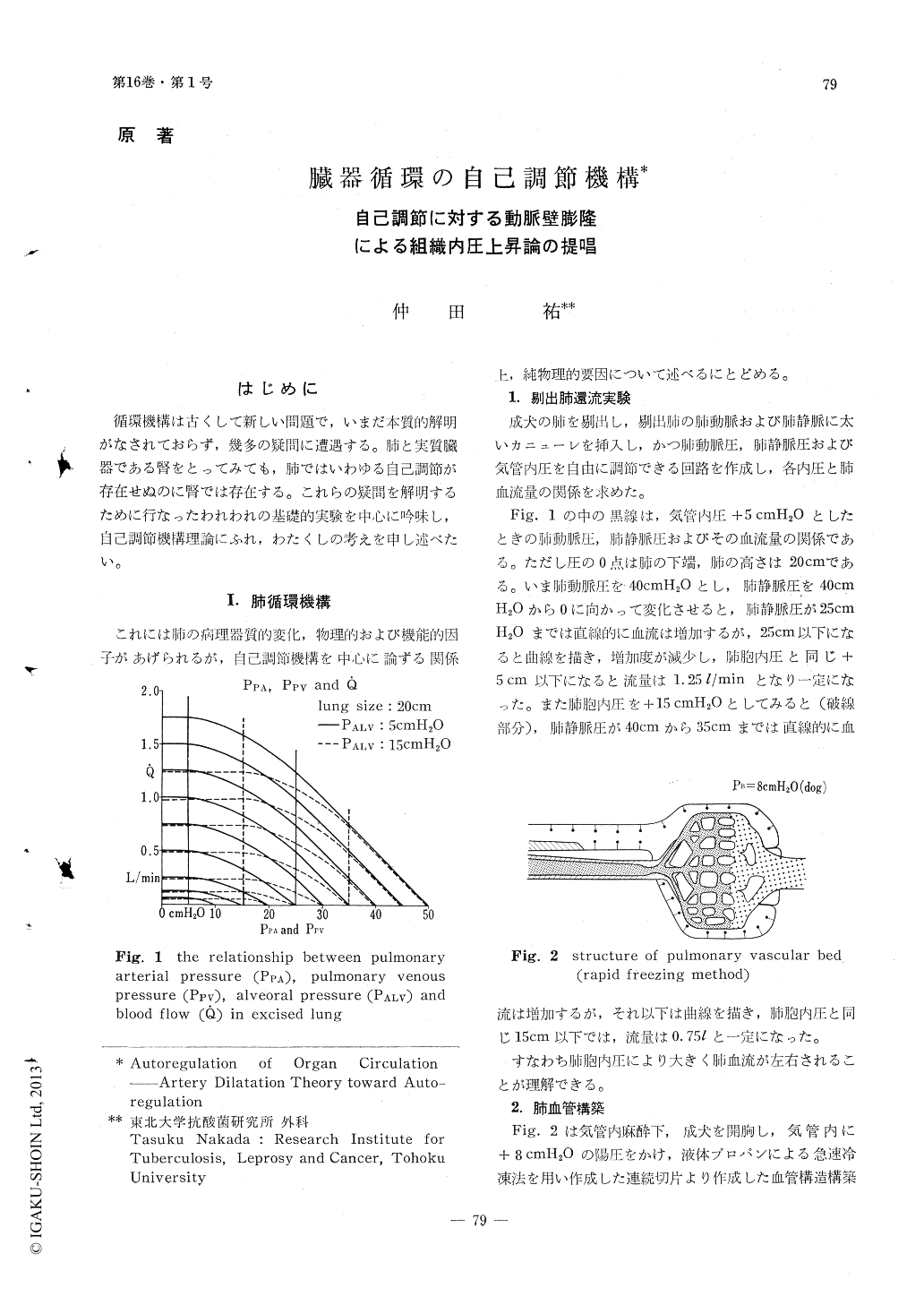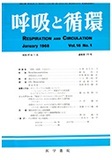Japanese
English
- 有料閲覧
- Abstract 文献概要
- 1ページ目 Look Inside
はじめに
循環機構は古くして新しい問題で,いまだ本質的解明がなされておらず,幾多の疑問に遭遇する。肺と実質臓器である腎をとってみても,肺ではいわゆる自己調節が存在せぬのに腎では存在する。これらの疑問を解明するために行なったわれわれの基礎的実験を中心に吟味し,自己調節機構理論にふれ,わたくしの考えを申し述べたい。
Pulmonary circulation was compared with that of parenchymal organs, especially with renal circulation. There is a great difference between them at high arterial pressure. A new model of renal circulation was made. Thin rubber tube standing for arterial vessel, narrow glass tubes for arterioles, cuffs for capillaries and a thin rubber tube for venous vessel were connected in a plastic box which represents a capsel. The box was filled with saline as tissue fluid. When the renal arterial pressure increases, blood flow also increases, however rubber tube (arterial vessel) became inflated due to the resistance of glass tubes, and subsequently the cuff and the rubber tube (venous vessel) were flattend becauseof the increase of intra-capsular pressure. It was recognized that the venous pressure is ineffective when venous pressure is lower than the tissue pressure. Tissue pressure rises when the arterial pressure increases.
When arterial pressure increases more than some level, arterial-tissue pressure difference becomes constant independent of the arterial level.
It means the blood flow becomes constant, namely autoregulation appears.
This phenomenon was demonstrated by both perfusion of this model and of saline-filled lung in a box. On reflection, I empha-size that the lung circulation is a special case of organ circulation: when pulmonary arterial pressure increases, the volume of arterial vessels also increase due to resistance of arteriola, but there is no effect on the tissue pressure, namely alveolar pressure. Because the tissue pressure leaks out into alveoli and trachea and then to the atmos-phere.

Copyright © 1968, Igaku-Shoin Ltd. All rights reserved.


